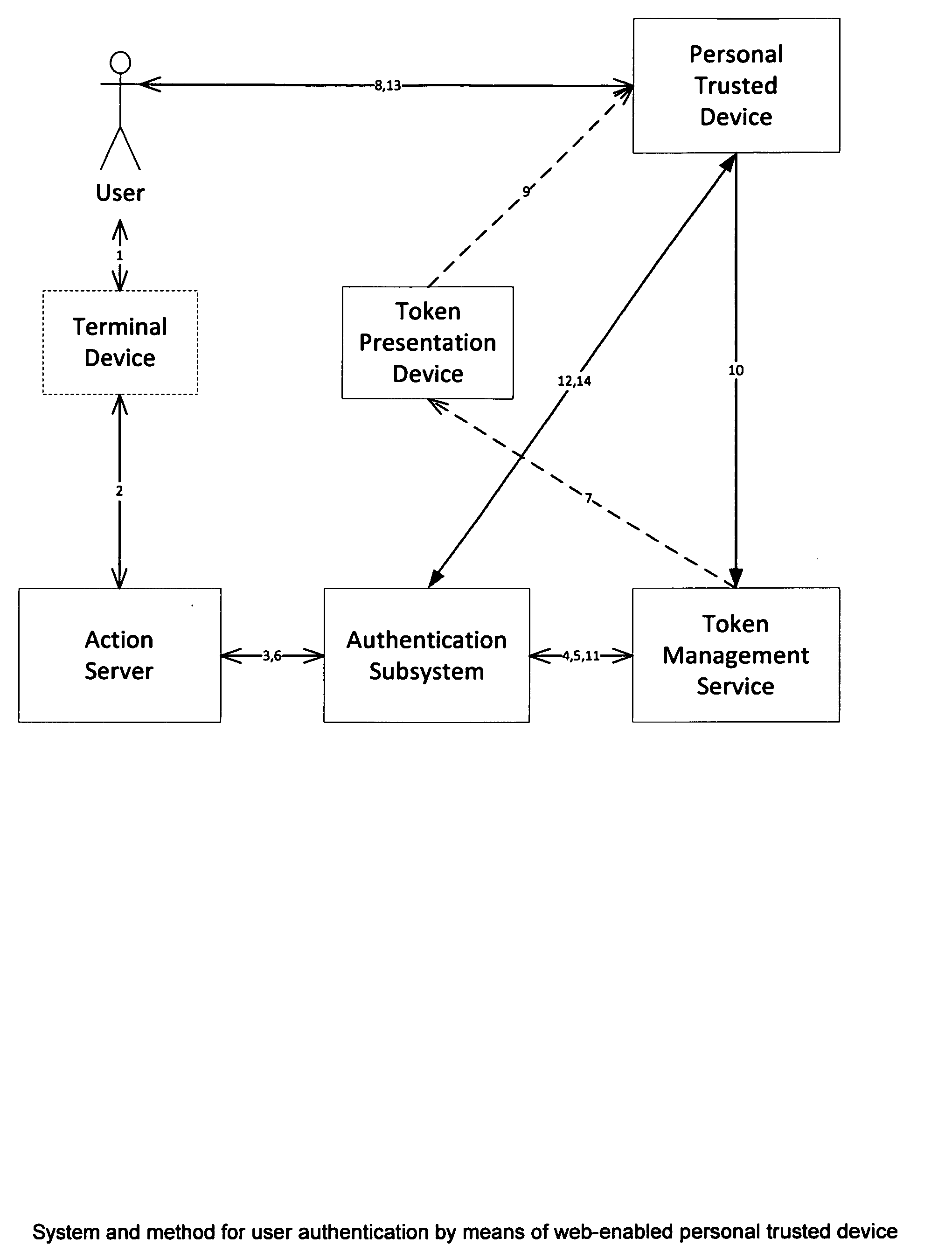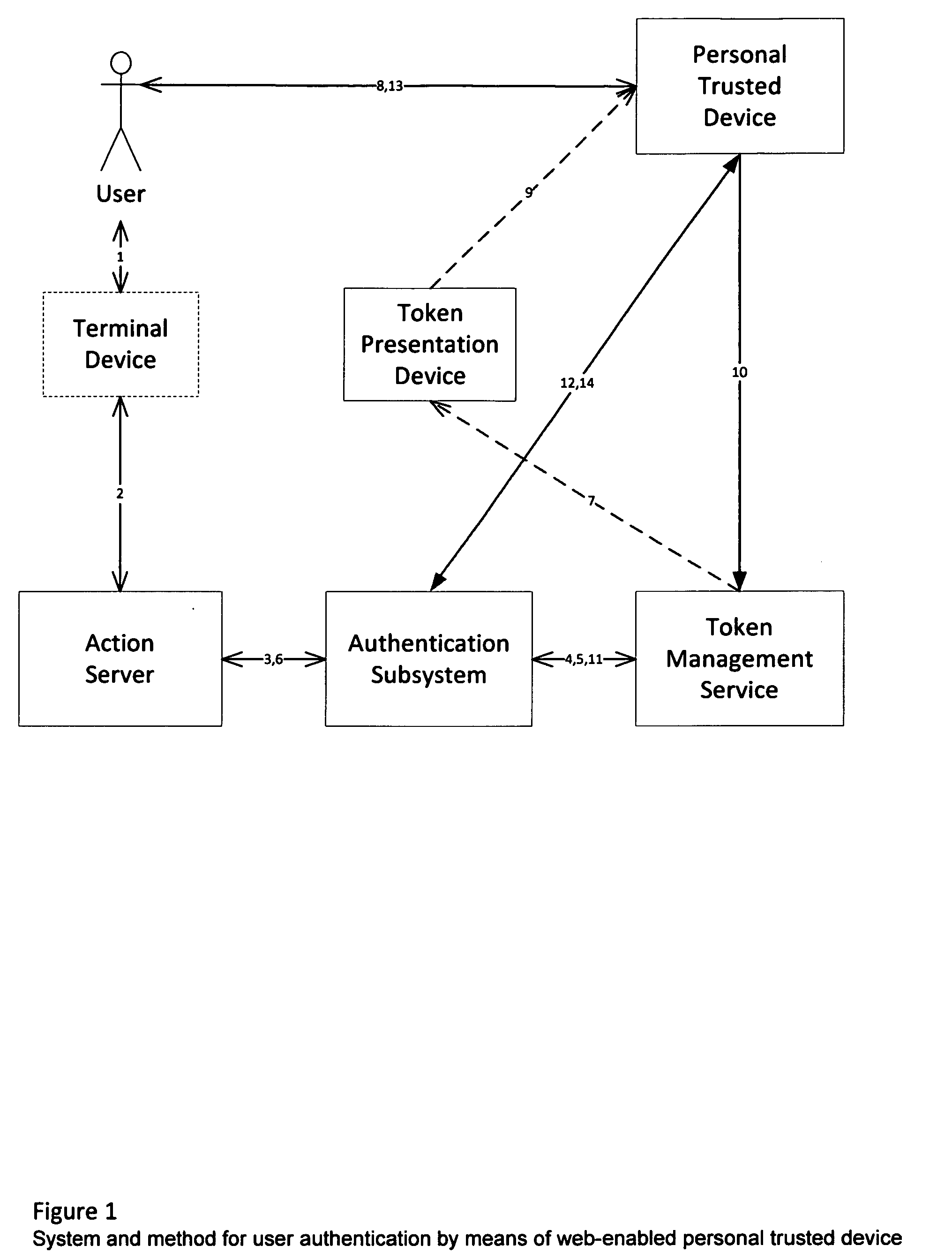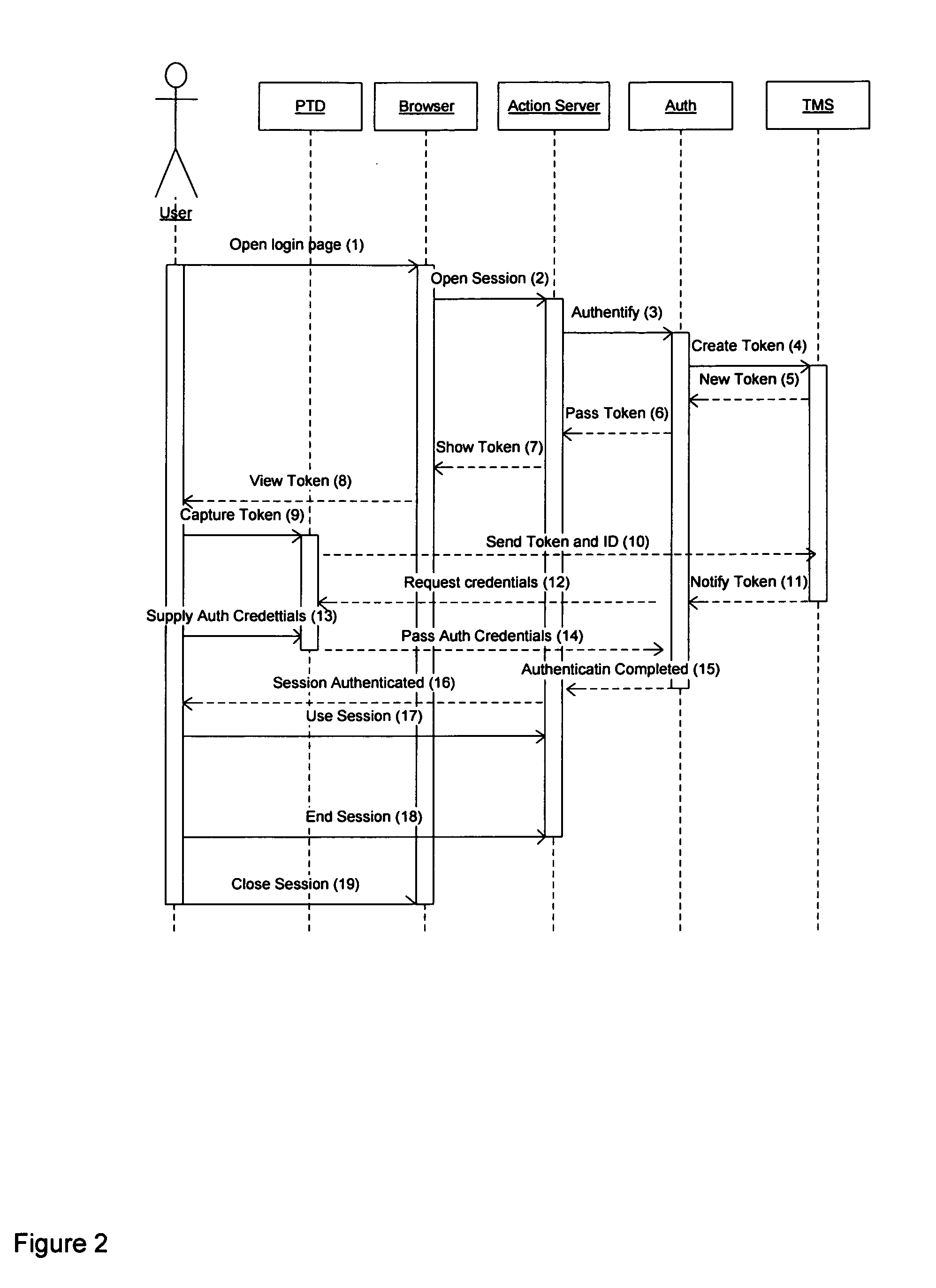System and method for user authentication by means of web-enabled personal trusted device
a trusted device and user authentication technology, applied in the field of information security, can solve problems such as insecure solutions, user authentication becomes a central issue, and approaches that require specialized hardwar
- Summary
- Abstract
- Description
- Claims
- Application Information
AI Technical Summary
Problems solved by technology
Method used
Image
Examples
Embodiment Construction
[0009]In this specific embodiment the action server is a web server, which serves a web application that requires user authentication in a web browser (terminal device). The embodiment is illustrated with FIGS. 1 and 2. The sequence of events in this embodiment is as follows:[0010]1. The user opens the login page of a web application in the browser (arrow 1 in FIG. 1, arrow 1 in FIG. 2).[0011]2. The web browser opens a session (FIG. 1, arrow 2; FIG. 2, arrow 2) on a web server.[0012]3. Action server creates an authentication request (FIG. 1, arrow 3; FIG. 2, arrow 3) and sends it to authentication service.[0013]4. Authentication service requests a token from a token management service (FIG. 1, arrow 4; FIG. 2, arrow 4).[0014]5. Token management service issues a token (FIG. 1, arrow 5; FIG. 2, arrow 5).[0015]6. The token is passed through the action server (FIG. 1, arrow 6; FIG. 2, arrow 6) to the web browser (FIG. 1, arrow 7; FIG. 2, arrow 7).[0016]7. The token is viewed by the user...
PUM
 Login to View More
Login to View More Abstract
Description
Claims
Application Information
 Login to View More
Login to View More - R&D
- Intellectual Property
- Life Sciences
- Materials
- Tech Scout
- Unparalleled Data Quality
- Higher Quality Content
- 60% Fewer Hallucinations
Browse by: Latest US Patents, China's latest patents, Technical Efficacy Thesaurus, Application Domain, Technology Topic, Popular Technical Reports.
© 2025 PatSnap. All rights reserved.Legal|Privacy policy|Modern Slavery Act Transparency Statement|Sitemap|About US| Contact US: help@patsnap.com



